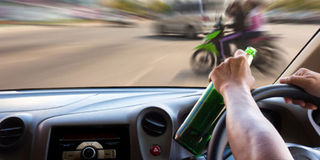Why you should not drive beyond set speed limit

Although many roads have speed limits, many motorists drive above the recommended speed, sometimes unknowingly. COURTESY PHOTO
Most roads that lead out of Kampala are designed with particular speed limits beyond which you should not drive. It could be one that recommends not driving above, say 50 kilometres.
They are positioned in different places, with a red or black line running through them from one edge of the sign post to the other.
However, for some reason, some motorists, due to sheer ignorance or carelessness, do not respect these road signs. One such person is Robert Akampa, who drives a Toyota Land Cruiser. On a highway with few cars, he says you will never find him driving below the 50 kilometre mark. Much as he says he is a fast driver, he is also quick to agree to the fact that driving fast comes with consequences.
“I drive fast but I am always very attentive on the road. I do not allow room for obstructions such as phones and I always ensure that my brakes are in the best road condition before I get on the road. They are the best parts on a car to reduce speed in case something scares me on the road,” Akampa explains. When he enters his car, the seatbelt is priority before starting the car engine.
What is also important to note is that though most roads have these speed limits, it is possible to drive above the recommended speed unknowingly. It mostly happens when you step on the accelerator and you feel as if the car is not moving. It is until you look at your speedometer that you get to realise that you are driving above the recommended speed on the sign post.
Dangers to other road users
Hellen Apolot, a Traffic and Road Safety officer with Uganda National Roads Authority (Unra), says speed limits along major roads are meant to allow you control the speed of your car at a given point or stretch.
“When the topography of the road or the area hinders proper road visibility of the driver, we use speed limit signs for guidance. There could be a sharp corner, curve or bend which the driver may not be aware of. The road may also be flat that when you drive so fast, you may fail to control your car if you realise there is another car or obstacle on the road,” Apolot explains.
Commercially, she says some points along busy roads are busy centres with different economic activities going on. At these points, she says the maximum speed indicated on speed limit signs at which you should drive is usually not more than 50 kilometers per hour.
If it is an area with schools, hospitals or a grazing area, which may not be as busy as trading centres with many people crossing the road, the recommended speed is usually 80 kilometres per hour. This is along major roads.
With Masaka Road, which most members of the public opine as slippery, Apolot says the heavy traffic flow on the road, especially between Kampala and Masaka, is controlled by alerting drivers with speed limits.
“Masaka to Kampala is a unique road. If you tend to drive too fast, you will meet another vehicle on the road. If you overtake, you end up crashing into other road users. These speed limit signs are there to guide motorists to be cautious with the speed they drive at for their safety and that of other road users,” says Apolot.
The speed limits
Davis Muhwezi, a road engineer with Unra, says speed limits on major roads are determined by how dangerous the road is and the class under which a particular road falls.
“Under class A, there are national highways such as Gulu to Nakasongola and Masaka to Kampala and Mbarara. These are roads with speed limits of between 80 to 100 kilometres per hour.
They are designed in this manner because much as over speeding is dangerous, a low speed is equally dangerous,” Muhwezi explains. Other major roads such as Kampala- Hoima and Fort Portal roads are also classified under class A. However, there are some roads such as Mbarara to Kabale and Kisoro that have got very many sharp corners.
Class B roads are those with an urban setting, with a speed limit of 50 kilometres per hour and these usually have busy activities such as trading centres and schools.
While the lower class of roads such as Kampala to Masaka have a speed limit of upto 80 kilometers per hour, there are also express highways such as the Entebbe express highway and the upcoming Jinja express highway, whose speed limit is between 100 to 120kilometers per hour.
“We attach a speed limit of a given road depending on previous or present factors such as multiple accident occurrences. If you take an example of Masaka road, we had to reduce its speed limit to 80 kilometres per hour because of the many accidents that occurred on it,” Muhwezi observes.
Away from causing accidents, Muhwezi says driving beyond the recommended speed limit is not only disrespecting other road users, but it is also a form of road indiscipline that is not good to other drivers.




